Renowned for its incredible versatility and striking features, the Haflinger is one of the rarest horse breeds in Australia, and the ‘Golden Horses’ are turning heads wherever they go.

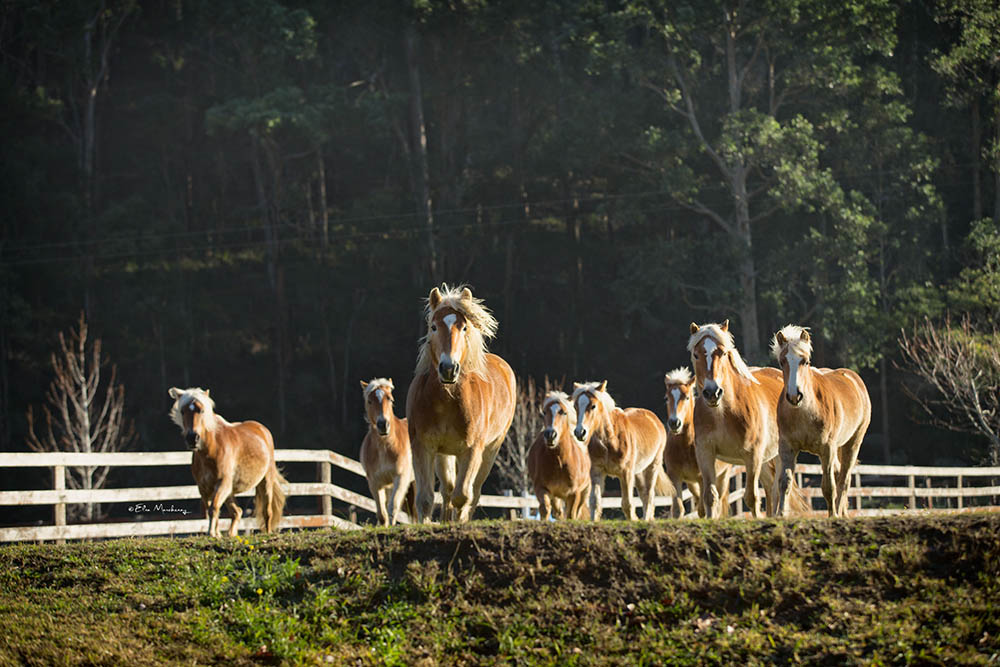
“They need to achieve
a score of 1A to become
a registered stallion.”
It all began when an Arabian stallion and a Tyrolean mountain horse mare produced the first Haflinger stallion in a town called Hafling in the South Tyrol mountains of northern Italy in 1874. The stallion, Folie, would become the sire of an entirely new breed and all registered Haflingers can trace their bloodline back to him.
The Haflinger was bred to work as a pack and draft horse at high altitudes in the European Alps, specifically in northern Italy and Austria. Their strong, athletic build, surefootedness, and easy temperament made them an invaluable partner for the men and women working alongside them. And their distinctive colouring, ranging from light golden to deep chestnut with flaxen manes and tails, made them an attractive asset.
To preserve their original features and characteristics, Haflingers are one of the most strictly examined and highly selective breeds in the world. The first studbook was established in Tyrol, Austria, in 1920 and breeding has been consistently monitored since. As Haflingers spread around the world, new breeders have diligently continued the task of preserving the bloodline. In Australia, Haflinger breeding is incredibly strict if owners want their horses to be registered with the Australian Haflinger Breeding & Sports Association (AHBSA).
STRICT CLASSIFICATION
When a Haflinger matures at three to four years, they are ready for classification, a process that will determine if it meets the breed standard. A vet checks them over for any physical flaws, and then the horse is assessed through a 10-point criteria for conformation, soundness, size, movement, temperament, colour, and fertility. The Haflinger is then given a score using a letter and number system with 1A being the highest, and continuing down with 1B, 1C, 2A and so on. A purebred Haflinger will only be rejected if there are any obvious breed defects such as discolouring, which would indicate another breed is present in its genetics.
For stallions, classification is far more rigorous. They need to achieve a score of 1A to become a registered stallion. Currently, there are around a dozen registered stallions in Australia, making the breeding pool quite small in comparison to other breeds. However, more bloodlines are being added with each new imported mare or stallion, and international artificial insemination. Once classified and registered, only purebred Haflingers are eligible to be branded with the traditional Edelweiss flower brand — a nod from breeders around the world to the little horse’s Austrian birthplace.
Even the naming of a Haflinger follows a specific process. Fillies are named with the same first letter as the mare, and colts are named with the same first letter as the stallion. This system helps owners know what bloodline their horse belongs to.
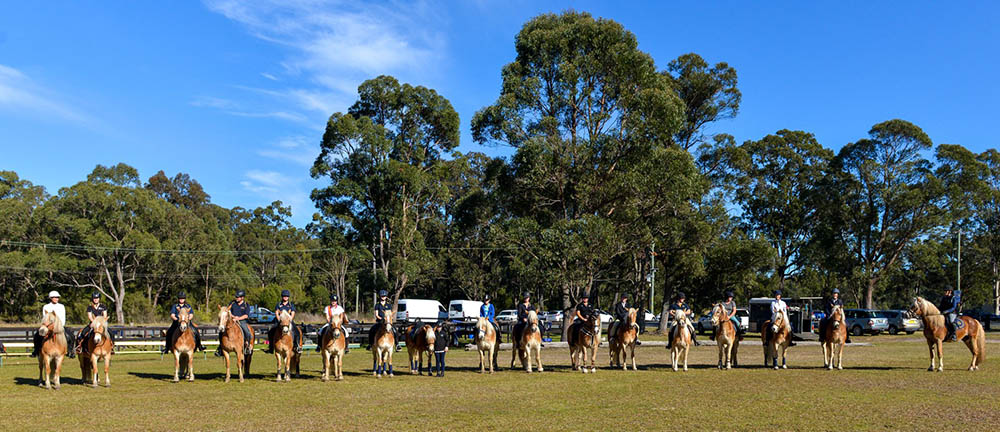

“There are around 600-700
registered Haflingers in Australia.”
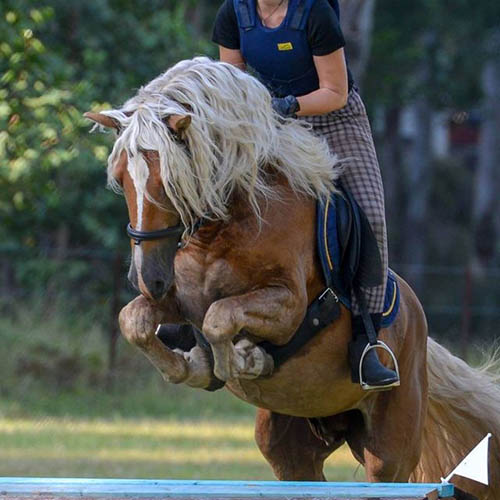
Since the breed arrived on Australian shores almost 40 years ago, numbers have grown slowly but steadily as popularity for the Golden Horse increases. For Paul and Sharon Groves at Fernances Creek Haflingers in the Hunter Valley, their involvement with the breed has always been a family affair.
“It’s probably almost a family tradition,” said Paul Groves. “Fernances Creek has been breeding Haflingers for 30 years. We’ve had a couple of generations of Haflingers in our family. It originally started when my parents acquired a mare and a colt in the late ’80s.”
THE ORIGINAL SEVEN
“In 1974, the first seven Haflinger horses were brought out to Australia by the Dalgety Land Company. They had fairly big plans around starting the breed in Australia but that fell by the wayside after the company’s direction was changed. The horses were sold into private ownership and small breeders took over, imported more Haflingers, and expanded the numbers.
“The mare and colt my parents purchased came from someone who was associated with buying the first Haflingers from the Dalgety company. So, we can trace back to those original imports. And then we picked up what had already been started here at Fernances Creek.”
In his position as the president of the Australian Haflinger Breeding & Sports Association, Paul and the rest of the board have taken on the task of maintaining the breed in Australia. According to the AHBSA, there are around 600-700 registered Haflingers in Australia, plus a small number of Haflinger-crosses and unregistered horses.
MODERN & TRADITIONAL
Due to breed manipulation during the 1900s, there are two distinct types of Haflingers: the “modern” type, which is taller and more athletic, and the “traditional” type, known for being shorter and broader.
“Normally Haflinger heights range roughly from about 135cm (approximately 13.1hh) to 150cm (approximately 14.3hh),” says Paul. “But during the world wars, the Haflinger was used fairly extensively for haulage reasons, particularly armament and guns. And over time, the breed was encouraged to grow smaller and broader to be better suited to draft work. Because they bred the horse down a little, the historically taller Haflinger is actually the traditional type.
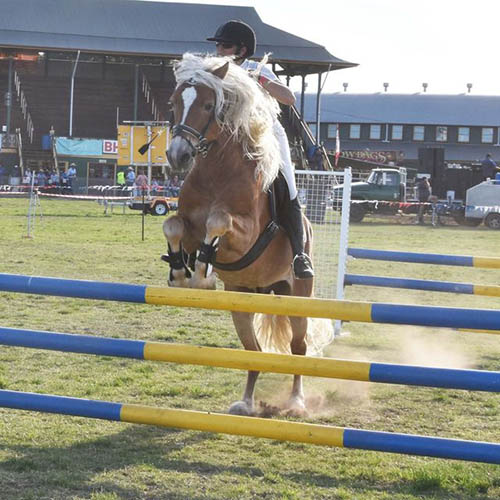
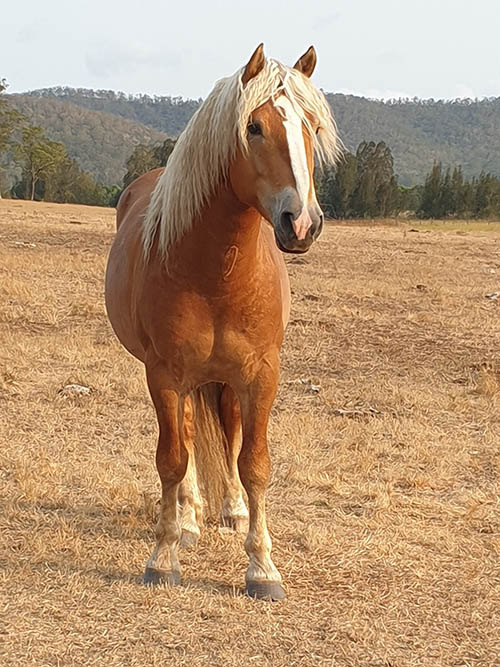
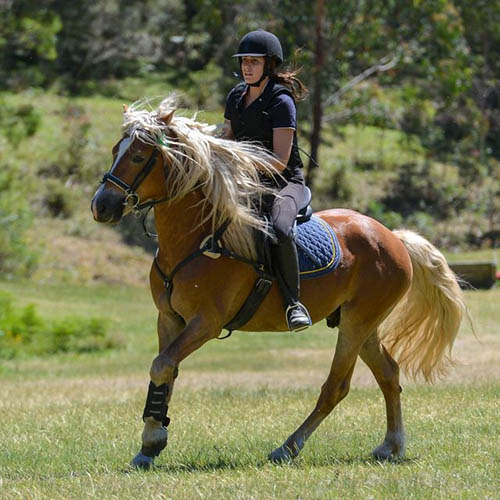
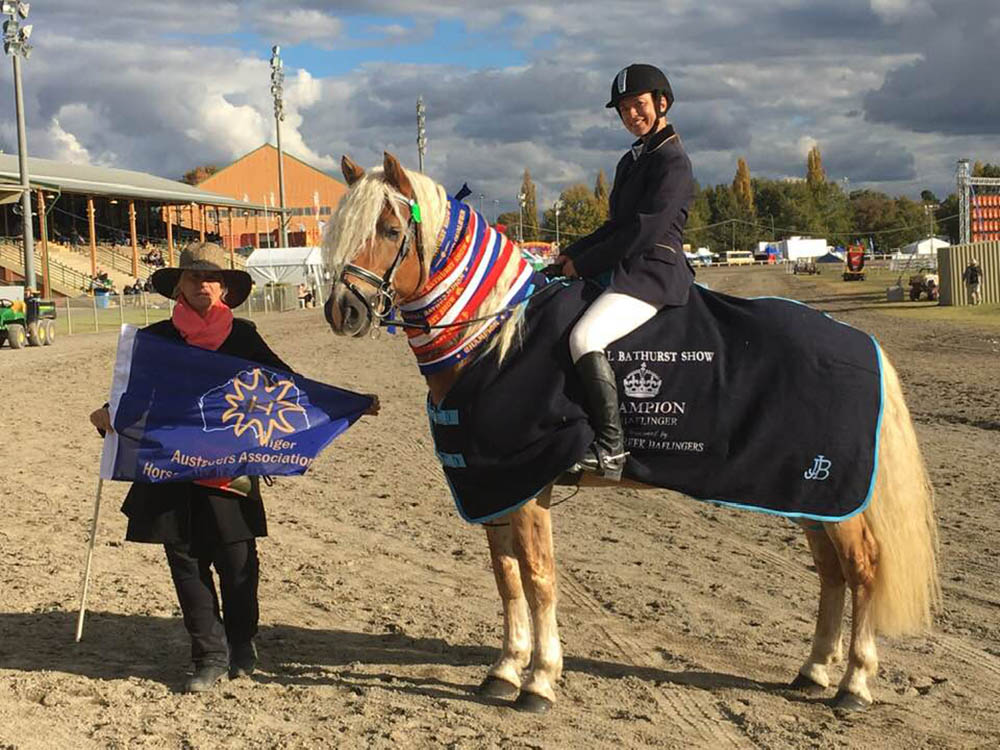
“By breeders focusing on the modern type,
they are returning the breed to what it
originally would have looked like.”
“The height has been gradually lifting over the last couple of decades. So, there are a few Haflingers that are a bit taller than 150cm. They’re part of what is pretty well referred to as the modern type of Haflinger. In some sense, you could say the terminologies have been flipped because people today refer to the modern-type Haflinger as being finer across the chest, more athletic, and taller. Whereas the type people call the traditional Haflinger is the type that was created during wars and moved away from the original bloodlines. So in many senses, by breeders focusing on the modern type, they are returning the breed to what it originally would have looked like.”
For decades the World Haflinger Breeding Centre, at Fohlenhof Ebbs in Austria, has been working to restore their Haflinger bloodlines to the original type. And while heights may be increasing in some of the bloodlines in Australia, there is love in the Haflinger community for both types of Golden Horses.
Based in the Lower Hunter Valley, Louise and Jon Venticinque co-own Setco Haflingers with Greg and Cathy Venticinque. With a herd of up to 28 horses, Setco currently maintains four registered stallions. One of the stallions, Stig, is the son of the current World Champion Haflinger stallion, Stainz. Louise says the Haflinger community embraces both the modern and traditional types and whenever the association meets there is always a mixture of Haflingers.
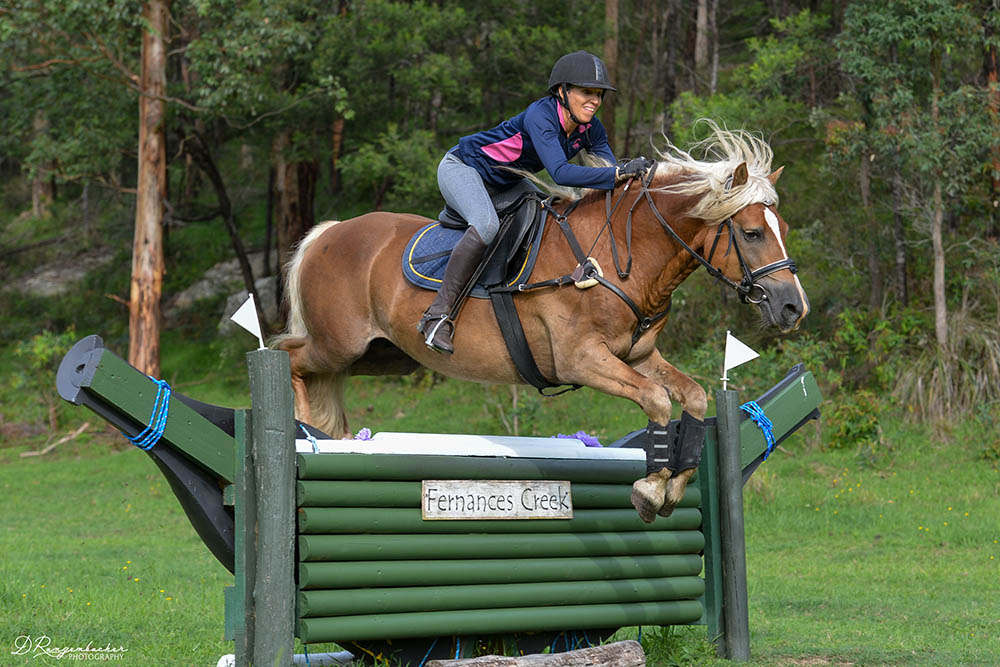
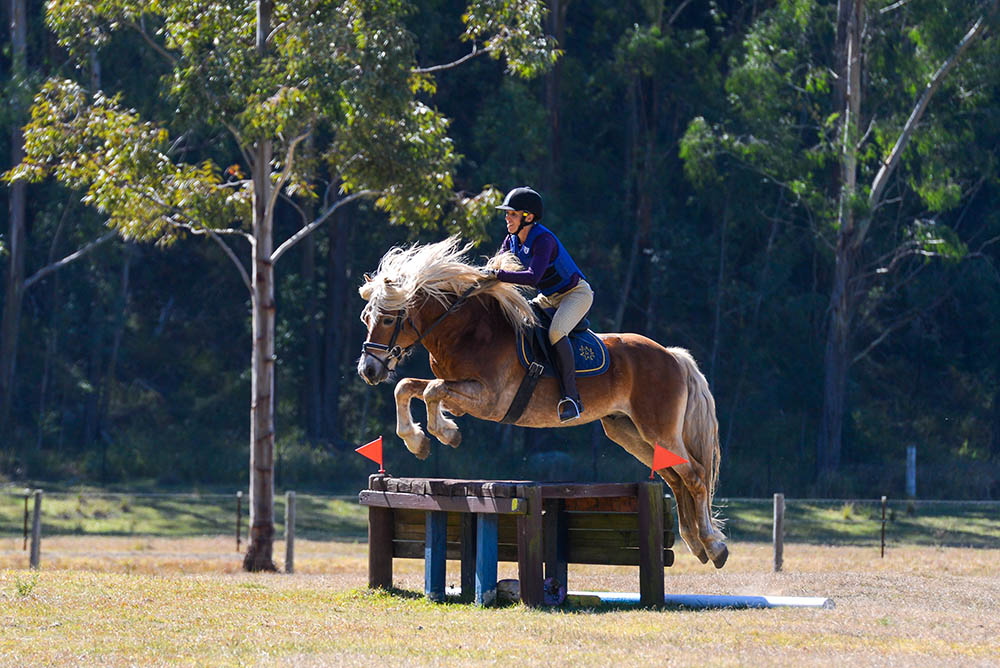
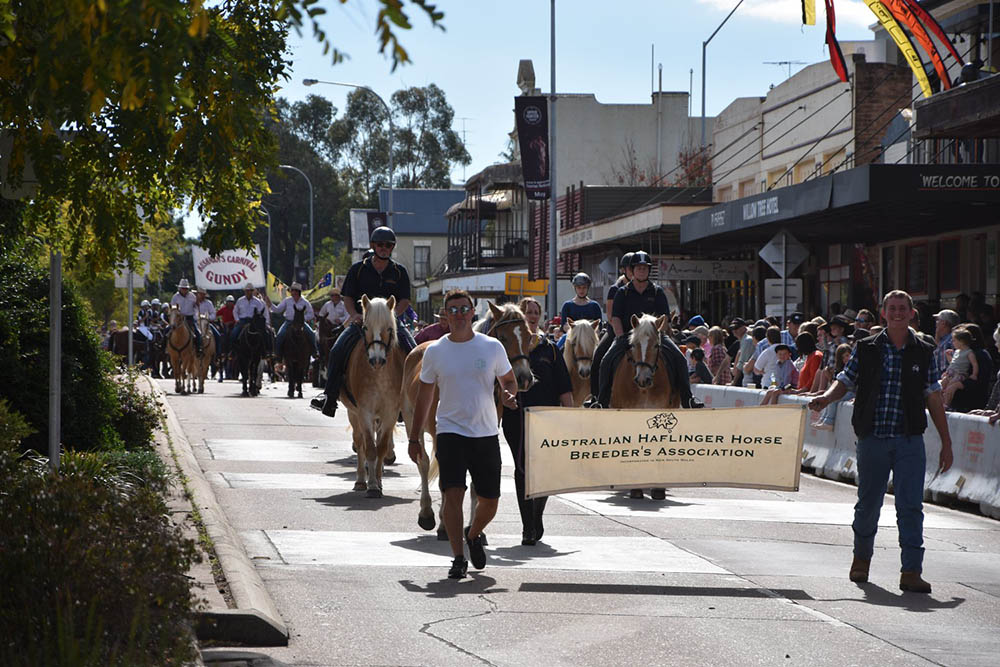
“People around the
fences all stop you to talk
about the horses.”
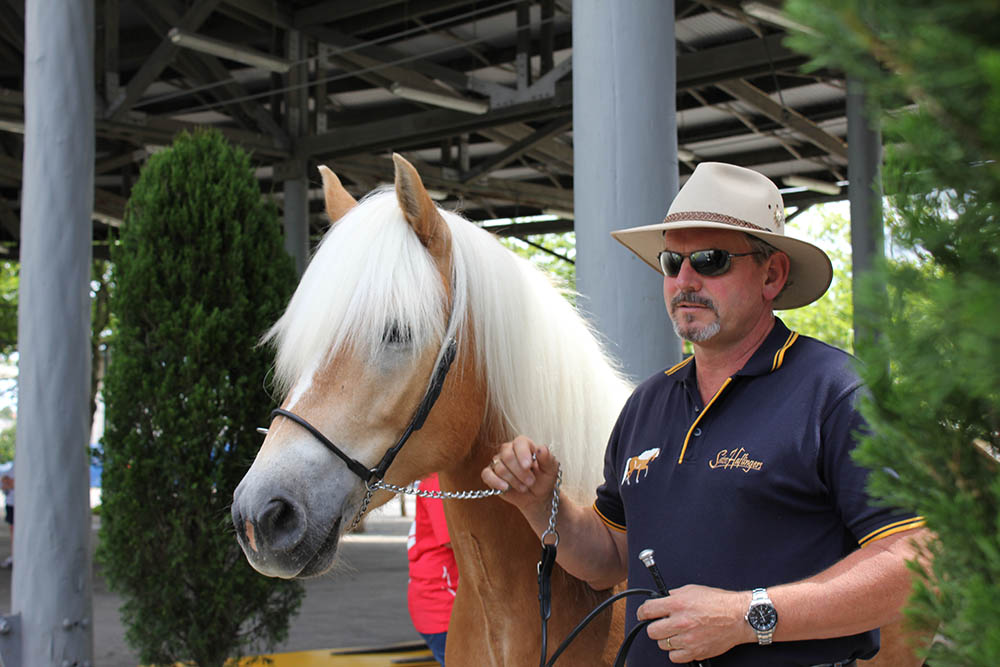
“You can’t dismiss either type because each can be used for different things. Some people like to drive their horses, which the traditional type is great for, and some people like to do showjumping, which suits the modern type. So, I think there will always be a place for both types in Australia,” she says.
CROWDS GO CRAZY
The AHBSA has seen a steady increase in breed numbers in recent years and, as more Haflingers are seen out at competitions, their popularity is continuing to grow. Louise says it is almost as though Haflingers do their own marketing with the way they can draw people’s attention.
“Going to shows like Newcastle and Maitland, the crowd response is crazy. Because normally we like to take them out, especially for the ones that haven’t been to the show before. So, we take them around the show ring and all the people around the fences all stop you to talk about the horses. And then we’ll meet people months later and they’ll remember the Haflingers. It is amazing how much interest they get,” Louise says.
Their striking appearance isn’t the only feature Haflingers are famous for. Their temperament, personality, and trainability have attracted riders to them since the breed first emerged almost 150 years ago.
“We’ve taken some horses to Equitana to show in the Breeds village. One year we took our original stallion, Stolze, and we walked him in and put him in the stall. And someone walked up and said, ‘He’s not a stallion’… because he walked in so nonchalant. And we went, ‘No, he is a stallion’ and they just wouldn’t believe it. He was so calm.
“When I’d wash Stolze, his head would just go onto my chest and he’d shut his eyes. He would just love that little interaction. And, generally, that’s what most Haflingers are like – they just want to be with you.
“They do have some little quirky things. They are renowned for being able to work things out. A little bit of love goes a long way and they really do crave your attention and affection. I’ve got two little fillies at the moment, and oh my gosh, if I’m in the yard doing something, I’ll feel something on my back. And I’ll turn around and it’ll be one of them going, ‘I’m here, just so you know’. They just think you should love them.”
BLACK SUMMER
It’s a scenario that every equestrian hopes they’ll never have to face — evacuating their horses from a bushfire. For Haflinger stud owners Paul and Sharon Groves, an early exit was the only option with 22 horses in their care at their Hunter Valley property.
During the catastrophic 2019-20 bushfire season, the fire began encircling the Haflinger stud at Fernances Creek and the decision was made to move the herd north towards Newcastle. Paul says the whole exercise of moving the herd with stallions and pregnant mares was extremely challenging.
“There are not a lot of roads that we can use to get the horses out, so we made the call to evacuate early and take the pressure off us. The fire was quite slow-moving, but the tension was that it had been on our doorstep for three to four weeks and was slowly encroaching around our area.”
Another stud in the Hunter Valley, Setco Haflingers, as well as several other properties offered their help. Together, the Hunter Valley Haflinger community began the task of transporting the mixture of horses to safety, but with the fires creeping closer, the pressure was on. “It was quite a logistical feat to get them all on their way out of here,” Paul recalls. “We had a bit of a convoy of horse floats that moved the horses up towards Newcastle. Three of the mares were within a week of foaling and another had a two-to-three-week-old foal at foot so it was quite an undertaking.”
COMMUNITY RESCUE
For the next two months as the fires raged, Setco Haflingers near Newcastle cared for the displaced Fernances Creek herd. Setco Haflingers co-owner Louise Venticinque says it was just another example of how the Haflinger community comes together to help its members. “Sharon rang me and said the fires are really close, and I said get the horses out,” she explains. “You can’t wait to the last minute, especially with stallions. My niece and nephew from the other Setco property went over to help them and they did several trips.”
Louise says she and her husband were able to stable the Fernances Creek stallions, Spartacus and Austrian-born Artus, at their property. “We had six stallions on our property for seven weeks in all that heat. All the mares and foals went to my brother-in-law’s property. And because there were three mares still due to foal when they arrived, Sharon and Paul unfortunately missed the happy events.
“But the whole situation of not knowing what was going to happen with their property… it was just horrendous. But then we weren’t safe either. The fires were absolutely everywhere. And I kept thinking, what are we going to do if the fires strike up here?”
Thankfully, Fernances Creek Haflingers narrowly escaped the inferno with the fires coming within 5km of the property. But many creatures were not so lucky. An estimated 17 million hectares were burnt and more than 1 billion animals perished in the massive bushfire event that captured the world’s attention. A year on from the disaster, the landscape in the Hunter Valley is slowly recovering but the scars of the fires remain as a warning and a reminder of the devastation. EQ

